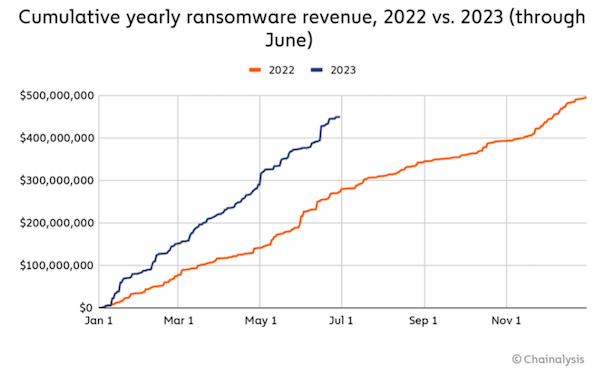Banning ransomware payments: An attractive but dangerous idea
A successful cyberattack on critical infrastructure — such as electricity grids, transportation networks or healthcare systems — could cause severe disruption and put lives at risk.
Our understanding of the threat is far from complete since organizations have historically not been required to report data breaches, but attacks are on the rise according to the Privacy Rights Clearinghouse. A recent rule from the United States Securities and Exchange Commission should help clarify matters further by now requiring that organizations “disclose material cybersecurity incidents they experience.”
As the digital world continues to expand and integrate into every facet of society, the looming specter of cyber threats becomes increasingly more critical. Today, these cyber threats have taken the form of sophisticated ransomware attacks and debilitating data breaches, particularly targeting essential infrastructure.
A major question coming from policymakers, however, is whether businesses faced with crippling ransomware attacks and potentially life threatening consequences should have the option to pay out large amounts of cryptocurrency to make the problem go away. Some believe ransoms be banned for fear of encouraging ever more attacks.
Following a major ransomware attack in Australia, its government has been considering a ban on paying ransoms. The United States has also more recently been exploring a ban. But other leading cybersecurity experts argue that a ban does little to solve the root problem.
Ransomware and the ethical dilemma of whether to pay the ransom
At the most basic level, ransomware is simply a form of malware that encrypts the victim’s data and demands a ransom for its release. A recent study by Chainalysis shows that crypto cybercrime is down by 65% over the past year, with the exception of ransomware, which saw an increase.
“Ransomware is the one form of cryptocurrency-based crime on the rise so far in 2023. In fact, ransomware attackers are on pace for their second-biggest year ever, having extorted at least $449.1 million through June,” said Chainalysis.
Even though there has been a decline in the number of crypto transactions, malicious actors have been going after larger organizations more aggressively. Chainalysis continued:
“Big game hunting — that is, the targeting of large, deep-pocketed organizations by ransomware attackers — seems to have bounced back after a lull in 2022. At the same time, the number of successful small attacks has also grown.”
The crippling effect of ransomware is especially pronounced for businesses that heavily rely on data and system availability.
Ransomware revenue is up. (Chainalysis)
The dilemma of whether to pay the ransom is contentious. On one hand, paying the ransom might be seen as the quickest way to restore operations, especially when lives or livelihoods are at stake. On the other hand, succumbing to the demands of criminals creates a vicious cycle, encouraging and financing future attacks.
Čítaj viac








